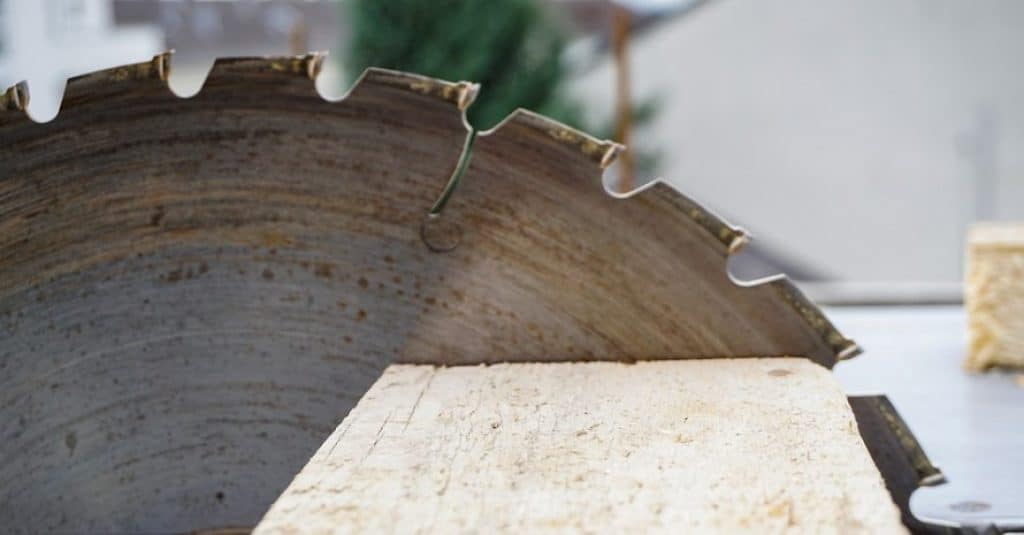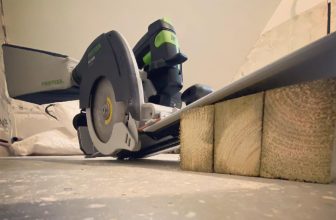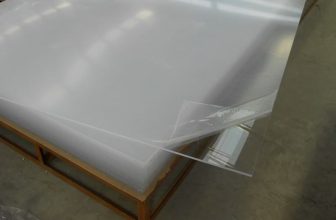How to Change Circular Saw Blade: Step-by-Step Guide
If you are looking for how to change a circular saw blade, it might become a necessity. This is why my first warning to you is never rush with it. Read this simple step-by-step guide and learn how to do it like a professional.
Changing the circular saw blade does not require extra skills from you, except for being careful and attentive. The procedure may vary based on the model of the circular saw you have, which is why it is crucial to read the instructions from the developers.
This tutorial is universal, and you can find only slight changes depending on the saw you currently use.
Contents
Quick Guide on Changing Circular Saw Blade
This is where you will learn how to remove a circular saw blade. Follow my recommendations, and you will become a master in no time. Before you start doing anything, pay attention to the information in the article.
How to spot when your blade needs replacement
If you don’t have an alarm clock or timer on your phone that notifies you that the time has come, it is easy to miss the moment. To be fair, to set an alarm at the appropriate moment is almost impossible without many years of experience and an ever-changing schedule of circular saw use.
This is why you can pay attention to such signs that indicate the time to change the blade on a circular saw:
- The blade of the circular saw is blunt;
- The blade is damaged;
- You have to put enormous efforts to make cuts;
- The blade is rusty.
How to change the circular saw blade
Before you do anything, find the manual to your saw from the developers. The procedure of replacing a circular saw blade varies based on the model. This guide will help you to perform basic moves.
Step 1. Remove the battery and unplug the saw
This is the first thing you have to do. Disconnect the device from the power supply. If the circular saw is cordless, remove the battery. This step can save you from injuries. No matter how many years you have been changing the blade, you can still press the button by accident.
At the same time, don’t forget to gather all the tools you might need around you. Since you need to change the blade, it is vital to have the new one nearby. When you decide to order the blade, you need to measure its size and find out whether it is compatible with your saw.
Step 2. Removing the arbor nut from the blade
Find the surface where you can place the saw safely. If there is a circular saw spindle lock, you can engage it. The lock can keep the nut in a stable position once you loosen it to free the blade.
Usually, there is a locking button on the shaft or disc. Every modern saw has such a feature. If you don’t have it, just push the blade into the surface from wood to fixate it.
Step 3. Remove the old blade
Insert a wrench on the arbor nut and turn it into the original direction of blade rotation. Press the lock and remove the screw on the blade. After you press the button with the lock, the blade freezes at one position, and you will be able to unscrew the nut.
Use the key that comes with the saw or find the one you need in the store. You have to turn the key counterclockwise on almost all models of saws. You can slightly try both directions.
Step 4. Replace the old blade with a new one
Clean the upper and lower guards before you install the new blade. Remove the sawdust that you see there. Slide the new blade on the shaft, performing the same moves in reverse order.
Make sure it is placed correctly. It is better to learn how it must be placed from the instructions that come with it. The blades come with an arrow pointer for the direction of rotation.
Step 5. Replacing the arbor nut
Put the nut in the right position and tighten it, using the wrench. Try not to over-tighten it, since it will tighten by itself while cutting. After that, place the clamping screw and ring back. Use the saw wrench.
Step 6. Test the new blade
After you put everything in order and fixate the blade reliably, connect the circular saw. If it is wireless, put the battery back, if not, reconnect the power outlet. Try the saw somewhere far from other people, and make sure that it moves the way it has to.
Safety Tips
While all the tools you use require basic knowledge of safety, the knowledge about how to use a circular saw is crucial. You have to remove the blade with extreme cautiousness. Follow the next rules:
- Never do anything to the circular saw unless it is still plugged in a power outlet or with the battery inserted;
- The gloves might save you from cuts. If you are changing the blade, the new one is sharp;
- Always read the manual. If there is one, examine it thoroughly;
- Change the blade on the safe surface. Make sure that there is enough space for you and the saw.
Related posts:
FAQ About Circular Saw Blade

Now, when you’ve learned how to install a circular saw blade, there are some more questions you might have. I have gathered the most popular ones around the Internet. Check out my answers below.
How do you change the blade on a circular saw without a lock?
If there is no safety lock, simply cut the blade into the wooden surface. It must be made specifically for those cases. Fixate the blade reliably there before you start doing anything.
When should I change my circular saw blade?
Once you feel that your saw does not cut as well as it used to, check whether it is blunt. If you damage the blade, you have to change it as well. In case you notice that the blade is covered with rust, you might need another one.
Where is the arbor lock on a circular saw?
The arbor is the specific shaft installed on the circular saw blade. Each saw has it nowadays. It is made for the safety of users.
Change the Blade in No Time
You can order several blades right with the circular saw. If the developer produces separate blades for your model, you can buy them too. Before you order the new blade, make sure it fits the saw.
The new blade might come with instructions, and you can use them to install it securely. Keep in mind the possible dangers of the sharp blade. Never start replacement while the saw is connected to the power outlet or with a battery inside.
How often do you replace the blade? What is the most common cause of replacement? Do you have more recommendations on changing the blade?
“A good tool stays with you for many years and choosing carefully ensures the job is done right, your work is neat, and the tool is always a pleasure to use”







